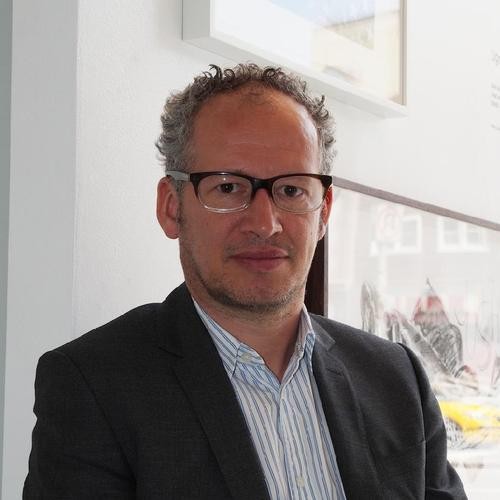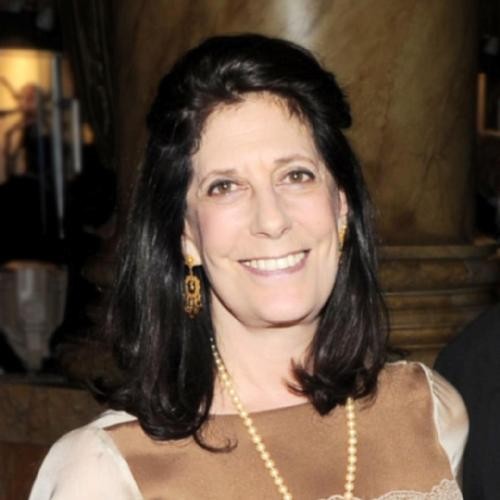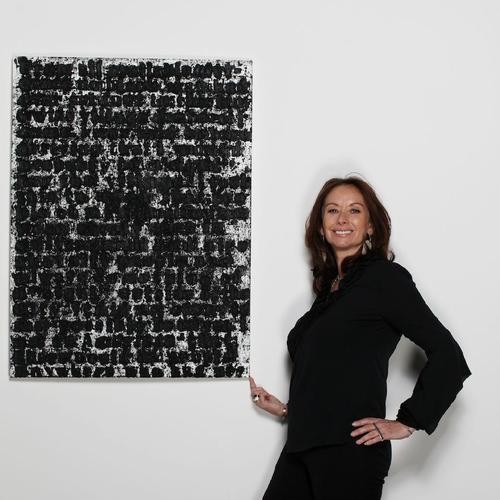Since opening in 2000, the International Print Center New York has promoted the greater appreciation of the fine art print by fostering a climate for the enjoyment, examination and serious study of artists' prints—from the old master to the contemporary.
On May 15th, IPCNY will hold its annual Spring Benefit Silent Auction, a fundraising event honoring honoring Robert Mangold, Kenneth Tyler, and Faye Hirsch and featuring works by acclaimed artists including Alex Katz, Robert Rauschenberg, and Ed Ruscha. We spoke to IPCNY's director Anne Coffin about why she felt it was important to establish an organization to champion the art of printmaking, the innovative New Prints Program, and their legendary artist patrons.
PREVIEW WORKS FROM THE IPCNY AUCTION AT RIGHT, AND CLICK HERE TO PLACE ADVANCE BIDS.
You founded the International Print Center in 1995 as the first—and only—nonprofit dedicated to the medium of fine-art prints. What inspired you to create the center, and what were some of your first programming initiatives?
Around the mid-‘90s it was generally acknowledged that something was amiss in the world of prints. Gone were some of the great little workshops scattered around downtown Manhattan, and many of the smaller galleries seemed to be migrating out of town or disappearing altogether, victims of rising rents. In particular, there was no exhibition venue in the city devoted only to exhibiting prints, where one could count on seeing a wide variety of high-quality contemporary prints from different sources—independent artists, little workshops, and major publishers alike. A group of us started talking about this and, in 2000, IPCNY was born.
We opened with New Prints 2000, the first of now 44 seasonal juried exhibitions of brand new prints, and later that fall we opened "Hard Pressed: 600 Years of Prints and Process" at AXA Gallery in midtown Manhattan. Hard Pressed examined techniques of printmaking as they evolved over time, beginning our efforts to educate a wider public about various aspects of the medium; it was also the beginning of our publications program—we documented the show with a serious scholarly catalogue—and the beginning of our Exhibitions Touring Program. All of our shows are documented and posted now—together with lots of other information about printmaking and print sources in general—on our website.
Although prints have been created by the greatest artists from the Renaissance onward, with artists from Rembrandt and Goya to Picasso and Rauschenberg achieving brilliant work in the medium, it tends to receive less attention than other artistic arenas, such as painting or sculpture. Why is printmaking so often overlooked?
I am convinced that the gap in public appreciation of printmaking is simply due to a lack of understanding of what, exactly, it is. It's more complicated to understand as a process than painting or drawing, for example, which are more direct processes. It's also not a medium the average person experiences in the course of their education—unless they took up potato printing in third grade!—or in daily life, as they do photography. It is a bit of a mystery to many people. But as one becomes familiar with the processes of printmaking, simply by looking carefully at lots of prints over a period of time, that becomes part of the charm—and the more one looks and learns, the more fascinating printmaking becomes. The layering of images is a window into the artist’s thinking. And of course on a purely visual level, there is nothing like the crispness of a beautiful image on a pristine piece of paper.
There is also, of course, the fact that prints are made in multiple images, and to some people it is important to own a unique work. Looking at this the other way around, how wonderful it is that many people can own and enjoy the same image—that various museums can own and study and exhibit the same work in different contexts.
Your center is celebrated for its New Prints Program, which exhibits work by a dizzying range of artists selected by a revolving jury of art experts. Everyone from art students to Jasper Johns have contributed submissions. What compels a living legend like Johns—a master of the medium—and a talented amateur to both want to have their work exhibited at your Chelsea space?
We are always thrilled to be able to present the work of a master such as Jasper Johns in one of our shows—alongside mid-career artists and artists new to the scene—you can imagine for example how thrilling this is for a young emerging artist. Many people have told us that the very existence of the New Prints Program is affirmative to young artists by encouraging them to continue working in the medium, and to believe in the potential of their own work as artists.
In fact, Johns’s print was submitted to the New Prints Program not by the artist himself but rather by the publisher, in this case the LeRoy Nieman Center at Columbia University. Johns has, however, supported IPCNY along the way; he has been very generous, as have other artists of his stature. Many donate prints to our benefit auctions, lend prints to our shows, and participate in other ways—in recognition, I believe, of IPCNY’s role in supporting the artists’ community, particularly in offering exhibition opportunities to young artists through the New Prints Program.
Many university-affiliated workshops across the country, as well as small community presses, submit work to our New Prints shows. These shops are scattered across the country, many in small communities far from major cities, and for them, as for individuals artists, the process of having their work reviewed by our committee of curators, master printers, and collectors is a great opportunity—not to mention the possibility of having their work chosen for exhibition in our beautiful gallery in Chelsea. Three thousand prints were submitted for the last New Prints show, and 72 were selected; the shows have become increasingly competitive with every passing year. IPCNY presents three New Prints exhibitions each season, and the work is selected purely on the basis of merit, with no submissions fee required.
For your spring benefit this year you have chosen to honor Robert Mangold, Kenneth Tyler, and Faye Hirsch. Could you talk a little bit about why you selected them?
Every year IPCNY selects three individuals who have made really important contributions to the world of prints, as artists, publishers or as interpreters of the medium, such as Faye Hirsch this year, whose articles we all enjoyed in the Print Collector’s Newsletter, then Art on Paper for so many years, and now in Art in America. The roster of artists we have honored at our Annual Spring Benefit Dinner, beginning with Ellsworth Kelly in 2007, including Ed Ruscha, Vija Celmins, James Rosenquist, Terry Winters, Claes Oldenburg, and now Bob Mangold, needs no explanation—they are masters of the field! And this year, we are thrilled to be recognizing Ken Tyler, whose inventive, creative role at Tyler Graphics resulted in beautiful and very exciting prints by many artists during his long career as publisher and Master Printer. We have also honored distinguished collectors over the years, several curators and paper conservator Martina Yamin. I think that many of the donations to our Benefit Auction each year come to us in honor of the great accomplishments of our honorees.



























